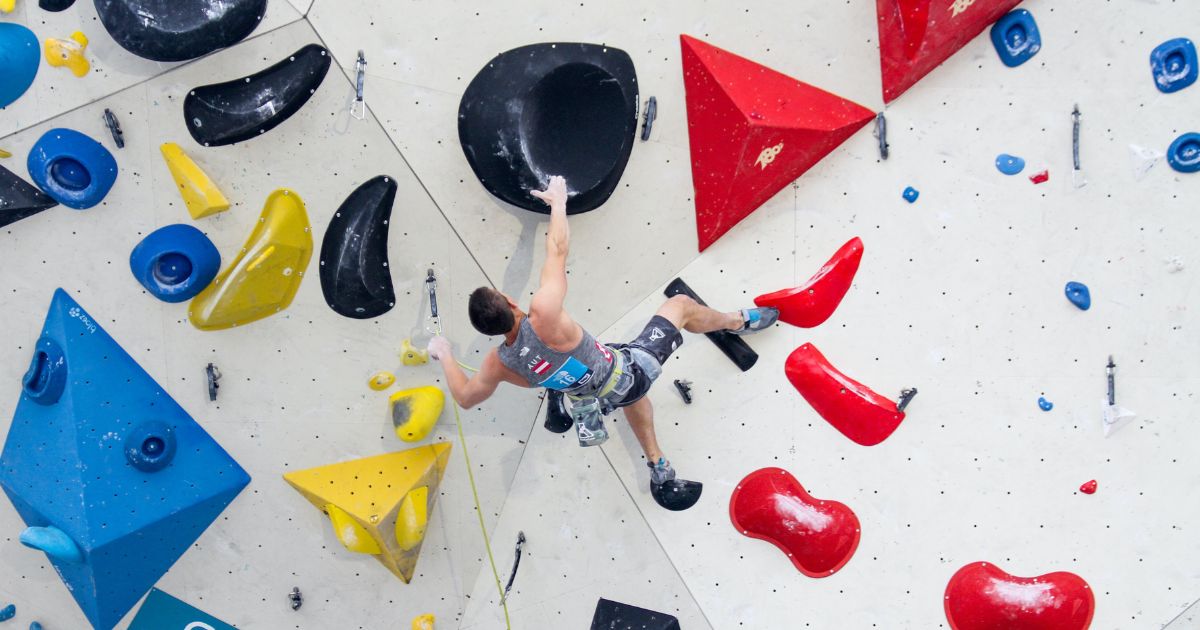Table of Contents
Climbing Handholds 101: A Beginner’s Guide
We’re going to delve deep into the world of climbing handholds in this beginner’s guide, covering the many varieties, methods, and intriguing histories of those bright, rock-like features that can be found on gym walls.
First, let’s examine the various kinds of climbing handholds that you may come across, such as jugs, slopers, and crimps. To improve your climbing technique, you must learn the subtleties of each hold, as different hold types call for different techniques.
We will also talk about the importance of footwork and how to use handholds effectively when navigating these tricky features.
Lastly, we will examine the evolution of climbing handholds from traditional outdoor climbing to contemporary indoor climbing facilities. As we delve deeper into the world of climbing handholds, grab your chalk bag and get ready to improve your climbing abilities!
The Origins of Climbing Holds
Let’s pause to appreciate the rich history behind each of the handholds before we set out on our journey through them. Climbing holds were first made from crude plastic, scrap wood, or even pieces of unwanted rock. They were intended to resemble natural rock features found outdoors. These days, these holds give indoor climbing areas a creative touch in addition to their practical use.
These days, climbing holds are carefully designed utilizing cutting-edge materials and manufacturing processes. They provide climbers with a wide variety of experiences and challenges because they are available in an abundance of shapes, sizes, and textures. Climbing continues to honor its modest beginnings despite its modern evolution, serving as a constant reminder of the intrinsic link between indoor climbing and its natural outdoor counterpart.
The Seven Types of Climbing Handholds
1. Jugs: Your Climbing Best Friends
A climber’s best friend is jugs, which can have deep incuts or resemble handlebars. They provide a comfortable grip that makes progression easy, making them ideal for beginners. Recall that there’s a reason they’re called jugs—they may even have some similarities to water bottles!
Beginner routes frequently have jugs, which give first-time climbers a more confident grip. Climbers of all skill levels find them to be a welcome sight because of their large, easily grippable nature, which provides a comforting anchor point as they reach for the next handhold.
2. Underclings: The Upside-Down Challenge
In essence, underclings are upside-down jugs, but because of their tricky nature, handling them requires strategy. To maximize these special handholds, maintain a high body position around your midsection.
For underclings to navigate successfully, they need a firm grip and accurate foot placement. To stop yourself from slipping, contract your core and concentrate on keeping your arms tense. Underclings are a challenge that you can confidently overcome by using your upper body strength and remaining aware of your body positioning.
3. Slopers: Deceptively Tricky
Because they have smooth surfaces and no clear edges, slopes can be deceptively difficult. Keeping your arms straight and lowering your body below the sloper will increase friction and improve your grip.
To overcome a steep slope, one must possess strength, balance, and technique. It’s critical to distribute your weight and position your body correctly to keep control during these holds. You can enhance your stability and make slopers easier to handle by concentrating on using your core and keeping your body close to the wall.
4. Crimps: Conquering the Evil Cousins
Crimps can range in size and form from tiny chips of pure evil to reasonable. They are challenging, but they are also great training tools because they give your grip muscles and finger joints a great workout.
Although many climbers detest crimps, it can be immensely rewarding to defeat these nasty cousins. Climbers can master the art of crimping and take on even the trickiest holds with perseverance and practice.
Learning to crimp on small edges and shallow pockets is essential to developing into a versatile climber. So take on the challenge and get to work defeating those wicked crimps!
5. Pinches: Embracing Both Sides
As the name implies, pinches require holding with both fingers and the thumb. They get more difficult the wider and more jagged they are. Optimizing thumb usage is essential to mastering pinches.
A great way to test your finger dexterity and strength is with pinches. For them to keep a firm hold, a careful balancing act between pressure and control is needed. Climbers frequently seek out increasingly challenging pinches as they advance to push themselves and develop their general hand strength.
Climbers can acquire a solid and dependable grip on even the most difficult pinch holds by concentrating on using their thumbs to their fullest potential.
6. Pockets: Mastering the Art of Limited Space
Climbers are challenged to find the ideal finger combination in pockets because of their limited space. Slots are small, long pockets; huecos are large, rounded pockets; and monos are single-finger pockets. Selecting the fingers with the greatest mechanical advantage is crucial.
Accuracy, strength, and the capacity to read the rock and predict the best handholds are all necessary for pocketing. Climbers have to develop the ability to trust their fingertips and make snap judgments about which pockets to use. Climbers must overcome both physical and mental challenges to become experts in the art of cramped space.
7. Volumes: Changing Wall Angles
Volumes are becoming more and more popular because of their power to drastically alter wall angles. Although volume usage regulations may differ, they provide a distinctive climbing experience by changing the wall’s profile.
Using volumes to create overhangs, slabs, and corners that present climbers with novel and exciting challenges is one of the main advantages. Route setters can design dynamic and captivating climbing routes that call for flexibility and problem-solving by carefully placing volumes on the wall.
Furthermore, because volumes can be used to simulate natural features like cracks, bulges, and protrusions, they facilitate more imaginative route planning. Volumes are a useful tool for gyms trying to keep their climbing walls interesting and difficult for their patrons because of their adaptability.
Using Proper Climbing Hold Terminology
Now that you have a solid understanding of climbing holds, talk to other climbers about climbing problems using the appropriate terminology. It shows off your climbing expertise and improves communication as well.
Always call holds by their proper names, such as edges, crimps, jugs, slopers, pinches, and pockets. This will enable you to more fully comprehend other people’s beta and more precisely characterize the kind of hold you experienced on a route. With a little more practice, you’ll soon be speaking like an experienced climber.
In summary
This concludes our thorough guide to handhold climbing. Knowing the subtle differences between each type of handhold can improve your climbing experience, regardless of your level of experience. Tell us about any particular difficulties you’ve encountered or your favorite climbing holds in the comments section.
With a greater knowledge of the different handholds you might come across, you can approach your climbing routes with increased assurance and proficiency. As you advance in your climbing journey, never forget to put safety and correct technique first. You should also never stop pushing yourself.
You can master even the trickiest handholds and advance your climbing skills to new heights with commitment and practice. Continue challenging yourself and savor the thrilling experience of rock climbing!
Related Posts










Discussion about this post